“Citizen Kane,” “All the President's Men,” “Spotlight,” “The Post.” The most famous films about journalism are from the U.S., repeating the dominance that Hollywood exercises over the global film industry.
In the south of the continent, however, films are also made with journalism as a guiding thread, whether specifically about the journalistic craft or using reporters and editors as central elements of the plot.
In a global ranking prepared by the project Periodistas en el Cine, only one Latin American film made it into the top 10: 2002 Brazilian movie “Cidade de Deus” (City of God), by Fernando Meirelles and Kátia Lund, which portrays the aspiring photo reporter Buscapé using images to carve out a path for himself in the midst of violence.
Before it, however, there were many others, made by some of the most renowned Latin American directors: Brazilian Nelson Pereira dos Santos, Argentine Fernando Ayala and Chilean Raul Ruiz, among others.
The global representations of journalism in cinema are often similar to each other, according to journalist and professor Joe Saltzman, founder of the online database Image of the Journalist in Popular Culture (IJPC).
"The images, no matter if it's Latin America, Bollywood, China, Japan – they all are just like the American images. There's no difference. I have students all around the world who do PhDs, so I'm on the committee for Germany, Belgium, Pakistan. I read their stuff when we worked together, and they're practically the same as American images – the editors screaming orders, you know, the same thing," Saltzman told LatAm Journalism Review (LJR).
However, according to Manuel Barrientos, one of the founders of Periodistas en el Cine, there are also highly original representations.
“There are many Latin American films that represent journalism in unique ways. 'Bocas de Ouro’ [Brazil, 1963] and 'O Pagador de Promessas' [Brazil, 1962] are outstanding examples,” he told LJR.
Federico Poore, co-creator of Periodistas en el Cine, has an explanation for why few Latin American films have entered the ranking of the best films ever made about journalism.
“I think the survey simply has to do with a question of notoriety, because Latin American films are less seen. For example, we have seen one from Latin America called ‘La historia del baúl rosado’ [2005], a Colombian film. Unfortunately, it is difficult to find it,” he told LJR.
Barrientos indicates a reason for this difficulty in access: films often did not have adequate conditions for storage and availability, suffering from the precariousness of film libraries in the countries, and ended up lost.
"The problem is that in many Latin American countries there are no adequate film libraries. For example, Argentina has lost many films because they do not have an adequate national film library," he said.
To shed light on some films that deserve to be seen more, LJR selected eight Latin American films that involve journalists or journalism.
The list is not representative of all production on the continent. Only one film was chosen per country, and only narrative films were considered.
Some of the currently selected films can only be found in film libraries or on websites organized by film fans.
By clicking on the links, the reader is redirected to the Periodistas en el Cine page, which includes complete analyses of the works.The films are:

Poster of the 1926 Colombian film "Garras de Oro" ("Golden Claws" or "Dawn of Justice"), a classic in Latin American cinema
“Garras de Oro” (P.P. Jambrina, Colombia, 1927)
(In English, “Golden Claws,” or “Dawn of Justice”)
After a single showing in 1927, this silent film fell victim to censorship and was lost for almost 60 years, until it mysteriously reappeared in the 1980s. Only 55 minutes could be restored, including the beginning and the end.
The film addresses the controversial issue of Panama's separation from Colombia, strongly criticizing the role played by the United States.The journalism appears by way of the editor of the newspaper The World in the city of Rascacielo, capital of Yankeeland, who denounces the role played by the U.S. in the separation of Panama from Colombia, and finds himself involved in a geopolitical plot.
According to Moore and Barrientos, “‘Garras de Oro’
is one of the most controversial and enigmatic films in Latin American cinema.” The movie can be viewed on YouTube.
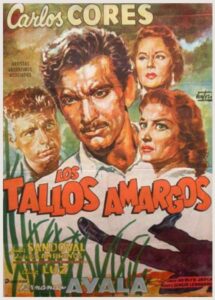
Poster of the Argentinian film "Los Tallos Amargos," ("The Bitter Stems"), by Fernando Ayayla
“Los Tallos Amargos” (Fernando Ayala, Argentina, 1956)
(In English, “The Bitter Stems”)
Classic noir and one of the most famous Argentine films, with music by Astor Piazzolla. The protagonist, Alfredo Gasper, is a journalist who feels his life and career are at a standstill. In search of easy money, he decides to enter into a pact with a Hungarian immigrant, Liudas, to establish a fake journalism school remotely.
Gasper's devotion to the project becomes increasingly intense, and he makes tragic decisions, in a plot that sometimes resembles a work from Alfred Hitchock. The film is also praised for its black and white photography.
“It is a noir film from the 50s but with a very cynical look, very raw and excellently made,” Federico Poore said.
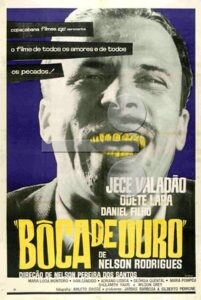
Brazilian classic "Golden Mouth", by Nelson Pereira dos Santos, based on a Nelson Rodrigues play
(In English, “Golden Mouth”)
When the powerful bookie Boca de Ouro is murdered, a reporter interviews his former lover to learn about his mysterious past. The versions she tells, however, are contradictory to each other and change with each telling.
Based on a play by Nelson Rodrigues, the greatest Brazilian playwright, and compared to “Citizen Kane,” by Orson Welles, and “Rashomon,”by Akira Kurosawa, the film prompts a reflection on how journalism creates stories based on a reality that cannot be grasped in its entirety, and which is sometimes inaccessible.
The film was remade in 2019.
“La colonia penal” (Raúl Ruiz, Chile, 1970)
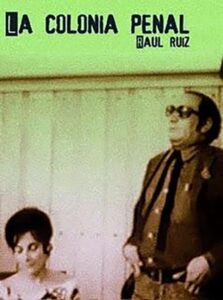
"The Penal Colony", by Chilean director Raúl Ruiz, based on the Franz Kafka story
(In English, “The penal colony”)
An adaption that takes liberties with the plot of a Franz Kafka story, filmed with a very low budget.
A journalist from international agencies from the Global North arrives on a small island in the Pacific, about 200 miles off the coast of South America. Once a leper colony, the island was later transformed into a prison and then, under a UN mandate, transformed into a republic independent.
The island inhabitants, who speak a strange dialect composed of Spanish and English, continue to obey the old prison rules, and a series of absurd events take place.
In the end, the journalist realizes that the island's main export product is news, which must correspond exactly to what clients from rich countries expect from the place: disasters, authoritarianism, torture. The film can be found on YouTube.
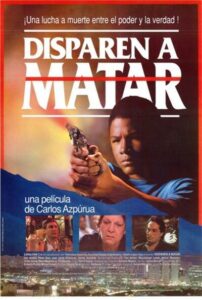
'Shoot to kill", by Carloz Azpúrua, is considred a classic in Venezuela
“Disparen a matar” (Carlos Azpurúa, Venezuela, 1990)
(In English, “Shoot to kill”)
First fiction film by documentary filmmaker Carlos Azpurúa, considered a classic of social denunciation in Venezuela. Mercedes witnesses the execution of her son without any justification by the police in a poor neighborhood of Caracas.
Refusing to accept the official version of the story – that her son was a criminal – she launches a campaign for justice.
Santiago, a young journalist driven by Mercedes' passion and determination, begins to investigate the story of the police cover-up at the risk of his own life. As the investigation progresses, the film exposes the depth of corruption in Venezuela.
The work was filmed during a period of crisis in the Venezuelan film industry, when few movies were being filmed.
“Tinta Roja” (Francisco J. Lombardi, Peru, 2000)
(In English, “Red Ink”)
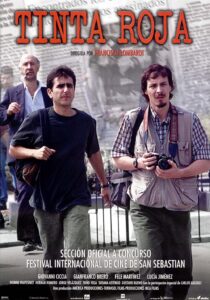
"Red ink" tells the story of a young reporter that discovers a sordid reality while covering police
One of the most famous Peruvian films of recent decades, based on a book by Chilean writer Alberto Fuguet. The naive Alfonso completes his studies in journalism and wants to write novels. He starts out focusing on the crime section of the tabloid El Clamor. Little by little, he plugs into a world full of suicides, murders and robberies to which he did not want to belong.
The film is very much based on the young reporter's relationship with his boss, Faúndez, a disenchanted alcoholic who tries to indoctrinate him. The film shows a catastrophic and sad version of Lima, and a young man who learns tricks and forms of manipulation to obtain information and scoops. According to its director, the work is a tribute to Nobel Prize-winning writer Mario Vargas Llosa.
“La dictadura perfecta” (Luis Estrada, 2014, Mexico)
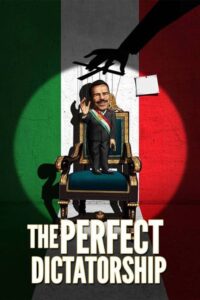
Political satire "The perfect dictatorship", that shows a corrupt TV network
(In English, “The perfect dictatorship”)
A comedy and political satire mocking the promiscuity between the political class and major television channels.
In the plot, TV MX, the most powerful Mexican television corporation, releases a scandalous story implicating Governor Carmelo Vargas in serious crimes and illicit business. Worried about his future, Vargas negotiates a secret billion-dollar agreement with the station's owners to clean up his own image.
Carlos Rojo, an ambitious young news producer, and Ricardo Diaz, a star reporter for a TV network, are responsible for running a dirty campaign to change the public image of the corrupt governor and make him, at any cost , a political star and a major presidential candidate.
The film was a huge success in Mexico and is available to watch on Netflix.
“Zanahoria, detrás de la verdad” (Enrique Buchichio, Uruguay, 2014)
(In English, “Zanahoria, behind the truth”)
Political thriller based on real events. An ex-soldier contacts a pair of journalists, Alfredo and Jorge, from the recently founded weekly Voces, to reveal secrets of the country's military dictatorship that have never been investigated.

Based on real events, Zanahoria tells the story of two reporteres who try to pursue a story that brings to light previously undisclosed crimes committed by the dictatorship in Uruguay
The film takes place during the 2004 elections. Promises made to journalists include evidence of torture, information on missing people and the location of undiscovered graves. However, the delivery of documents is delayed several times, and doubts arise as to whether the informant is telling the truth. The atmosphere is heavy, with journalists obsessed simultaneously with getting a scoop and also with healing a country's wounds.